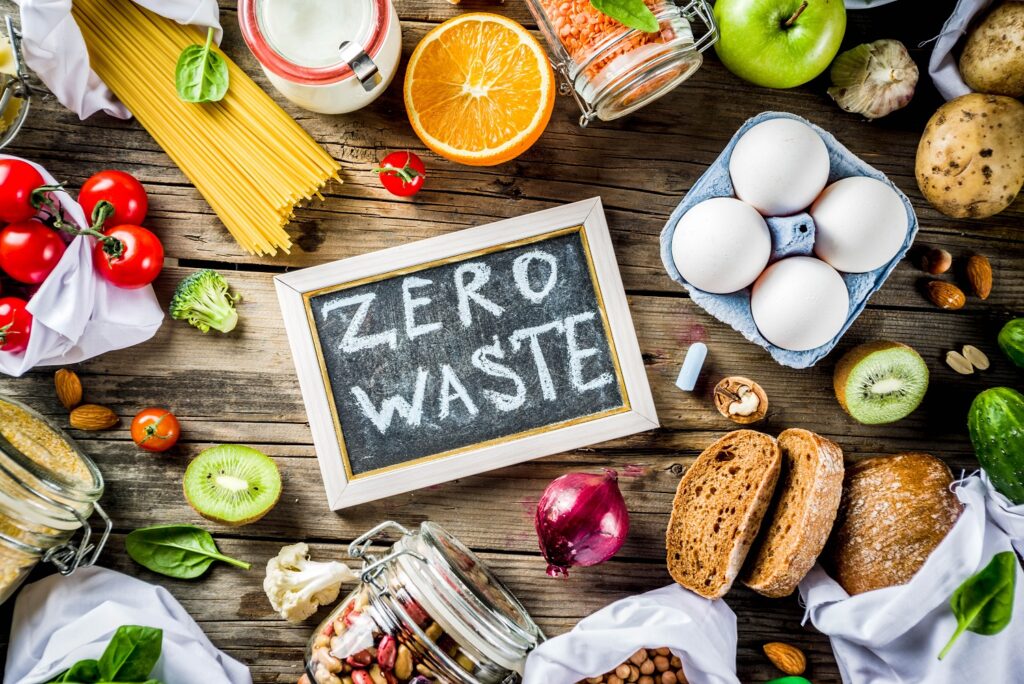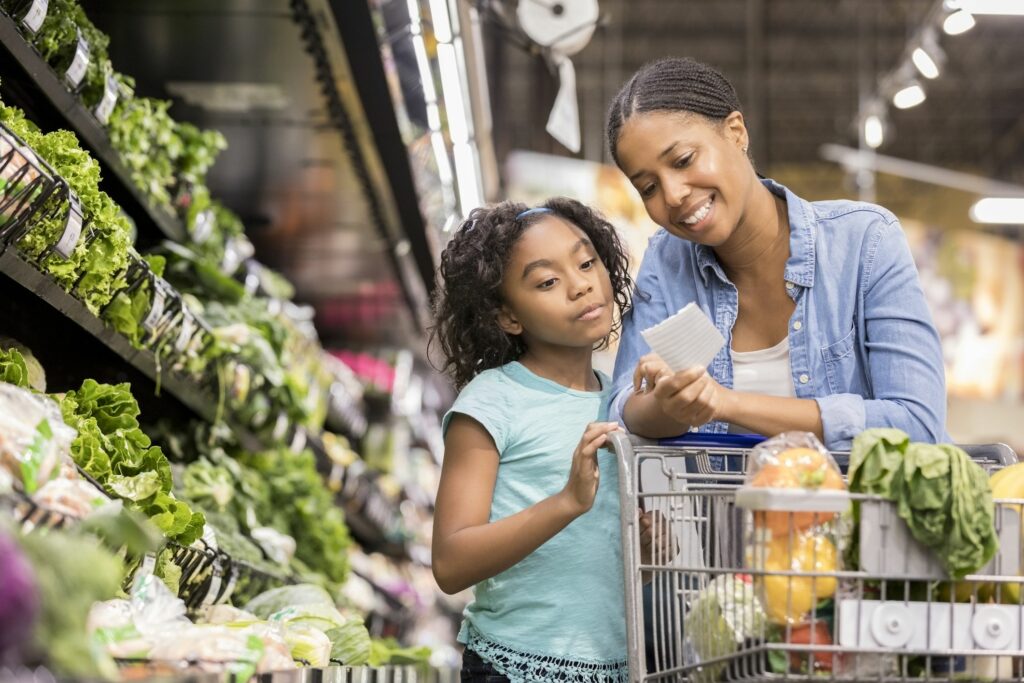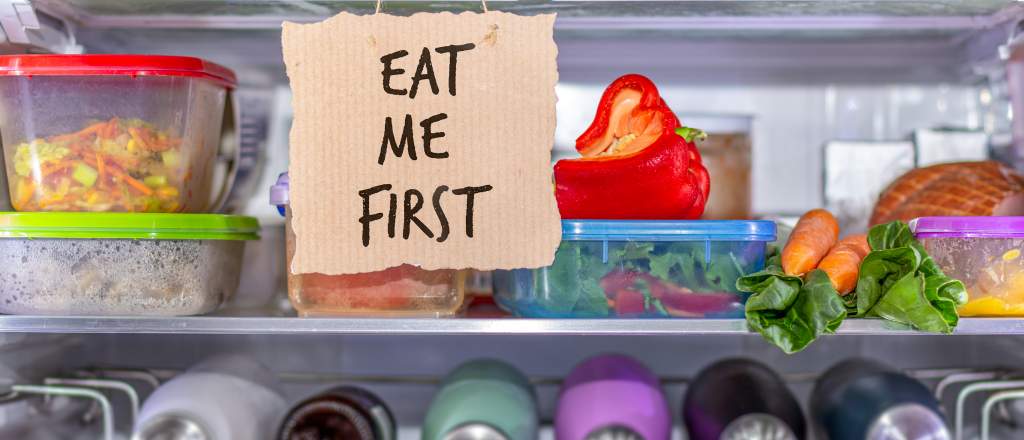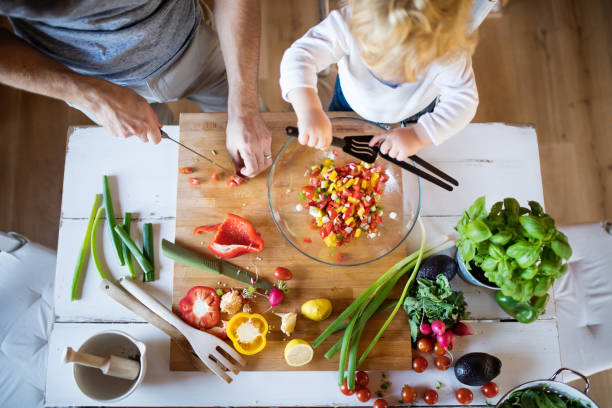
In 2019, it was estimated that around 35% of all food in the U.S. went unsold or uneaten. When food is discarded, all inputs (water, energy, land and labor) used in producing, processing, transporting, preparing and storing discarded food are also wasted. Many factors contribute to this waste, including consumer behaviors as well as influences within the food system.
Food loss and waste exacerbates the climate change crisis. The U.S. EPA published a report in 2021 on the environmental impacts of food waste. The report estimated that each year, U.S. food loss and waste embodies 17 million metric tons of carbon dioxide equivalent GHG emissions—equal to the annual CO2 emissions of 42 coal-fired power plants. Additionally, when food, the single most common material landfilled and incinerated in the U.S., rots it emits methane, which is more than 25 times as potent as carbon dioxide at trapping heat in the atmosphere.
By making small shifts in how you shop, store and prepare food, like those listed below, you can save time and money and keep the valuable resources used to produce and distribute food from going to waste.
Smart Shopping

- Smart shopping is one of the quickest ways to prevent food waste while also saving money. This requires proper planning and fine-tuning your grocery shopping habits so everything you buy gets put to good use.
- The optimal strategy is to pre-plan meals for the next few days or for the week. Always, always, always bring a list to the market and stick to it.
- Keep a running list of what’s in your refrigerator and before heading to the market, “Shop” it and your cupboards first.
- When possible, buy perishable items in small quantities and seek out markets that sell items such as beans and nuts in bulk bins.
- Understand those “use-by” dates.
- Shop at farmer’s markets where the food is generally fresher than that found in grocery stores. Fresher food lasts longer and since the food sold at farmer’s markets is grown locally, you are helping to reduce its carbon footprint.
- If you have a vegetable garden at home or typically buy in bulk, share your excess with neighbors. Post the food in the NextDoor app or in your neighborhood Facebook Group. Your actions could have a ripple effect in your community.
Additional Resources:
“Waste Free Kitchen Handbook. A Guide to Eating Well and Saving Money by Wasting Less Food” This comprehensive book, written by a scientist at Natural Resources Defense Council, is packed with tools (checklists, practical strategies, and educational information) for reducing food waste at home. (available at various on-line outlets)
Savethefood.com
An informative website sponsored by the National Resources Defense Council
“Food Product Dating” (fsis.usda.gov)
“The Food Expiration Dates You Should Actually Follow,” (nytimes.com)
“Food Waste Education Outreach Program” (cityofrochester.gov)
The site has a ton of information including a downloadable shipping list
“Food Waste is the World’s Dumbest Problem” (youtube)
A video produced by VOX and the University of California that features the food cam
Did you know?
Because frozen produce is often picked at its peak freshness and frozen within hours of harvesting, in many cases it is more nutritious than raw produce that travels for days and degrades in the refrigerator.
Smart Storage

One step towards reducing waste in your home is to store your food properly so it stays fresh for as long as possible thus maximizing the time you have to use it before it spoils. When thinking about how to store something at home, pay attention to how it is stored at the grocery store: if it’s refrigerated at the store, refrigerate it at home—if not, don’t.
A few tips for common fruits and vegetables:
- GREENS: For a longer life either (1) wash them and store them in the refrigerator loosely wrapped or layered in tea towels (or paper towels) and then place in a storage container, or (2) wash them in a salad spinner and then store them in the refrigerator in the colander part of the spinner. The same method applies to other leafy vegetables such as chard and kale and the leafy part of root vegetables such as beets, carrots, and radishes.
- HERBS: Herbs with soft stems like parsley, dill, cilantro, and basil should be popped like a bouquet of flowers into a glass of water. During the cooler months, the herbs can be stored out of the sunlight on the counter, in a warm kitchen or during the warmer months, the glass can go into the refrigerator, ideally loosely covered with a bag.
- POTATOES: Like onions, potatoes should be kept in a cool, dry, dark place away from onions which make them sprout faster. Wherever you store them in make certain the container is ventilated.
- CELERY: Celery is best stored loosely wrapped in aluminum foil in the refrigerator.
- TOMATOES: Tomatoes should be kept at room temperature preferably out of direct sunlight. To keep them fresher longer, cover the stem scar with a piece of tape. This prevents moisture from leaving the tomato and blocks air, and thus mold and bacteria, from entering the tomato. Only tomatoes approaching over-ripe should be stored in the refrigerator where they suffer in terms of taste and texture.
- FRUITS: Many fruits give off natural gases that hasten the spoilage of other nearby produce and thus they should be stored separately.
Other storage tips:
- Designate and label as “Eat First” a section of your refrigerator for storing leftovers and fruits and vegetables that won’t keep long.
- Clean out your refrigerator frequently and utilize food that are beginning to spoil.
- For longer storage, befriend your freezer and visit it often. Freeze food such as bread, fruits and vegetables you know you won’t be able to eat in time.
- Freeze asparagus bottoms, carrot tops, mushroom stems, and other vegetables for use later in stocks, soups or sauces.
- To preserve herbs purée them with a little oil and store in ice cube trays.
- Store Parmesan rinds in the freezer, they make a wonderful addition to soups and broths.
- Ripe bananas (with peels intact) can be placed on a sheet pan and cooked in a 350° oven for 15 minutes or until the skins are black. Once cool, peel and freeze the roasted bananas for use in smoothies or banana bread.
- Lay berries in a single layer on a sheet pan or plate and freeze uncovered overnight. Return the loose frozen berries to the freezer in a bag or container for future use.
- Reinvent leftovers and plan on an “eat the leftovers” night each week.
Additional Resources:
Store It,” an interactive storage guide with tips, tricks, and info to keep your food fresh and tasty as long as possible (savethefood.com)
“Food Freezing Guide,” North Dakota State University (ndsu.edu)
Ivaluefood.com, a Sustainable America site with tons of information including a refrigerator guide
Leftover recipes:
greatest.com/health/leftovers-meals-healthy-recipes
bigoven.com/recipes/leftovers
a fun interactive website with thousands of searchable recipes
“Food too Good to Waste, Recipe Box” kingcounty.gov
Did you know?
You can polish your shoes with a banana peel? Simply rub your shoes with the inside of the peel then give them a once over with a clean cloth.
Smart Prep

- When you get home from the market, take the time to wash, dry, chop, dice, slice, and place your fresh food items in clear storage containers to cut down on prep time later.
- Use perishables like seafood and meat earlier in the week.
- Save time by batch cooking meals that can be stored in the refrigerator or in the freezer for later.
- Aim to eat all edible parts of fruits, vegetables, and herbs including the flavor packed stems.
- The tops of root vegetables such as carrots, turnips, and radishes are wonderfully bitter and are good cooked sautéed, made into pesto or added to a soup.
- Rather than peeling carrots, cucumbers, and other vegetables and fruits, leave the peels on and give them a good scrub. If you decide to peel, save the scraps for vegetable stocks or for the ambitious, make fruit peels into jam.
- Broccoli stems can be sliced into coins and sautéed with garlic.
- Revive wilted vegetables in an ice water bath.
- Near stale bread can be made into croutons or breadcrumbs.
- Save leftover rice to make fried rice on days you don’t feel like starting a meal from scratch. Fold in whatever protein and vegetables you have handy.
- Leftover cherry tomatoes can be roasted in the oven until their skins pop and the liquid reduces to a thick syrup. Serve them warm as a side dish or once they are cool, place them in a freezer container for use in tomato sauce or bruschetta.
- Learn how to preserve your food.
- Save the leftover liquid from pickle jars to make quick pickles from leftover vegetables. Cut the vegetables up, boil the pickle liquid, and pour over the vegetables. Seal in a glass jar with a tight lid.
- Citrus fruit that has been zested and juiced can be used to make citrus vinegar. Submerge the spent citrus in plain white vinegar and store in the refrigerator for at least 2 weeks. Afterwards, strain the liquid and simmer it for three minutes with a little sugar and salt if desired. Allow to cool, pour into a jar and refrigerate.
- Consider cooking up some of your vegetable scraps for the family dog. Many dogs love carrots, celery, pumpkin, and even bok choy but you should always avoid onions and garlic. Before serving Fido a bowl of food scraps consult your vet or one of the many on-line sources on the subject.
Additional Resources:
Lovefoodhatewaste.com, (website)
100 Ways to Reduce Food Waste You Have to Try (YouTube)
Did you know?
You can regrow scallions and leeks in your kitchen in a glass of water or start everything from mushrooms to cabbage scraps in your kitchen and then transfer them to your garden once roots have developed? Check out “19 Foods You Can Regrow from Scraps” at foodrevolution.org.
